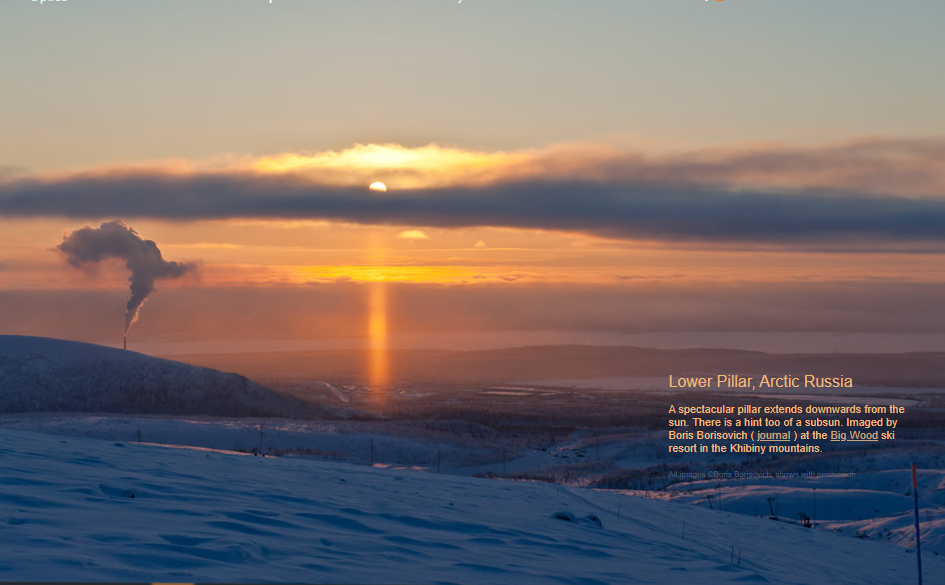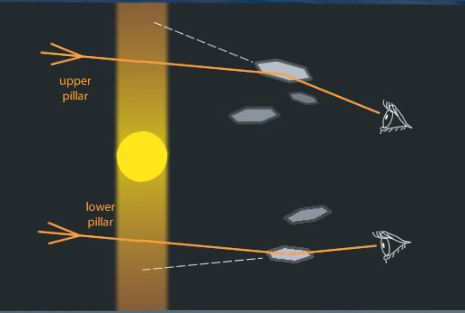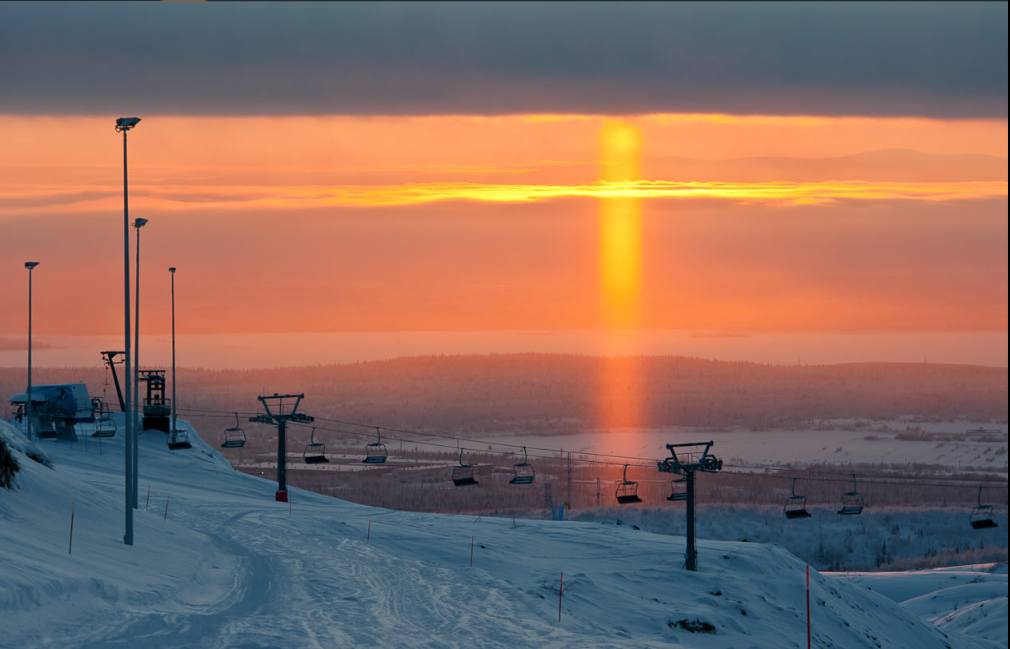Lower Sun Pillar, Arctic Russia - OPOD
Lower Sun Pillar, Arctic Russia - OPOD
Have you ever witnessed a breathtaking sight in the sky that left you in awe? One such phenomenon is the lower sun pillar, captured in all its glory in Arctic Russia. This stunning display of atmospheric optics is a sight to behold, with a hint of a subsun adding to its ethereal beauty.
The Lower Sun Pillar
The lower sun pillar is created when sunlight reflects off the mirror-like surfaces of wobbly hexagonal plate crystals. These crystals, known as column crystals, are responsible for the elongated pillar that extends downwards from the sun. Interestingly, the size of the crystals determines the length of the pillar, as larger crystals tend to wobble more from their equilibrium horizontal orientation.
It may seem counterintuitive that crystals wobbling in all directions can produce such a sharp and well-defined pillar. However, advanced ray tracing computations have confirmed that this is indeed the case. The intricate interplay between the angles of the incoming and outgoing light rays, combined with the crystal's wobble, creates this mesmerizing optical phenomenon.
The Subsun
The subsun is a close cousin of the sun pillar and forms in a similar manner. However, there are slight differences in the crystal alignment that give rise to this distinct feature. In the case of the subsun, the mirror-like crystals are aligned much better, with their upper and lower hexagonal faces almost perfectly horizontal.
The subsun appears as a slightly elongated brightening within the lower sun pillar. It is located at the same distance below the horizon (marked by the distant cloud deck) as the sun is above it. The crystals responsible for creating the subsun exhibit smaller wobbles and are not precisely aligned horizontally.
Unveiling the Beauty
Capturing these captivating atmospheric optics requires both favorable weather conditions and a keen eye for observation. The lower sun pillar and subsun are most commonly seen in polar regions, such as Arctic Russia, where the low angle of the sun creates the perfect conditions for their formation.
To witness this phenomenon, one must be in the right place at the right time. The Big Wood ski resort in the Khibiny mountains of Arctic Russia provided the perfect vantage point for Boris Borisovich, who managed to capture the lower sun pillar in all its glory. Such sightings are a testament to the wonders that our atmosphere can unveil when we take the time to look up.
Conclusion
The lower sun pillar and its cousin, the subsun, offer us a glimpse into the beauty and complexity of atmospheric optics. These captivating displays are created by the interplay of sunlight with wobbly hexagonal plate crystals, resulting in elongated pillars and brightenings below the horizon. While witnessing these phenomena requires favorable conditions and a keen eye, they serve as a reminder of the wonders that await us when we pause to admire the marvels of our atmosphere. So, next time you find yourself beneath a clear sky, take a moment to look up and see what secrets the heavens may reveal.

Lower Pillar, Arctic Russia
A spectacular pillar extends downwards from the sun. There is a hint too of a subsun. Imaged by Boris Borisovich ( journal ) at the Big Wood ski resort in the Khibiny mountains.

Lower Sun Pillar
Sunlight reflects from the mirror-like surfaces of wobbly hexagonal plate crystals. Large crystals wobble most and the greater the wobble from their equilibrium horizontal orientation the longer is the pillar.
It is surprising that crystals wobbling in all directions produce a sharp pillar. It is not easy to visualize but ray tracing computations confirm that it is so.
Subsun
The subsun is formed exactly the same way as pillars except that the mirror-like crystals are aligned much better with their upper and lower hexagonal faces almost perfectly horizontal.
Here the 'subsun' is a slightly elongated brightening in the pillar the same distance below the horizon (marked by the distant cloud deck) as the sun is above it. The crystals making it had small wobbles and were not precisely aligned horizontal.

Note: this article has been automatically converted from the old site and may not appear as intended. You can find the original article here.
Reference Atmospheric Optics
If you use any of the definitions, information, or data presented on Atmospheric Optics, please copy the link or reference below to properly credit us as the reference source. Thank you!
-
<a href="https://atoptics.co.uk/blog/lower-sun-pillar-arctic-russia-opod/">Lower Sun Pillar, Arctic Russia - OPOD</a>
-
"Lower Sun Pillar, Arctic Russia - OPOD". Atmospheric Optics. Accessed on November 26, 2024. https://atoptics.co.uk/blog/lower-sun-pillar-arctic-russia-opod/.
-
"Lower Sun Pillar, Arctic Russia - OPOD". Atmospheric Optics, https://atoptics.co.uk/blog/lower-sun-pillar-arctic-russia-opod/. Accessed 26 November, 2024
-
Lower Sun Pillar, Arctic Russia - OPOD. Atmospheric Optics. Retrieved from https://atoptics.co.uk/blog/lower-sun-pillar-arctic-russia-opod/.